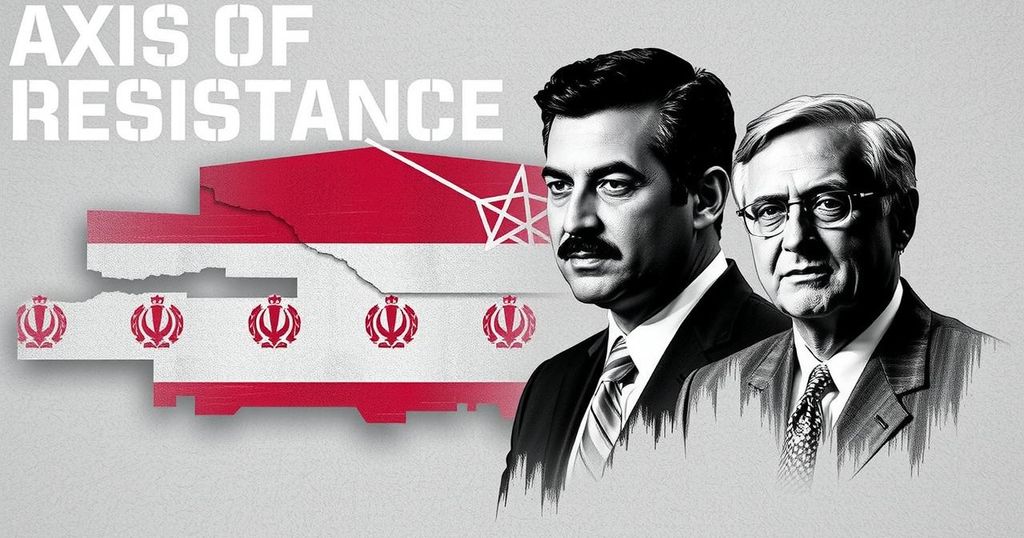The potential collapse of Bashar al-Assad’s regime signals a critical weakening of Iran’s axis of resistance, affecting Hezbollah, Hamas, and even Iraqi and Yemeni militias. Key allies are struggling, leading to a significant strategic loss for Iran in the region.
The upheaval caused by the potential collapse of the Assad regime marks a critical juncture for Iran’s strategic interests in the Middle East. For decades, Iran invested heavily in building a coalition known as the “axis of resistance,” which encompassed various state and non-state actors across the region united in opposition to U.S. and Israeli influence. As the Syrian conflict escalates, the alliance is in jeopardy as key allies face severe challenges in their military and political landscapes, notably the Syrian government, Hezbollah, and Hamas.
Recent developments have seen the swift ousting of Bashar al-Assad by rebel factions, contributing to a sense of instability in Syria—a cornerstone of Iran’s power projection through supply lines to Hezbollah in Lebanon. Furthermore, although some affiliated militia groups in Iraq and Yemen persist, their diminished roles signal a fragmentation of what was once a cohesive resistance front.
Experts emphasize the gravity of this shift; the significant setbacks faced by Iran’s allies showcase a broader regional loss for Tehran, jeopardizing years of strategic investments. The incapacity of its allies to maintain territorial and political integrity may hinder Iran’s long-term regional ambitions.
The concept of the “axis of resistance” has been a cornerstone of Iran’s foreign policy, particularly in the context of its opposition to U.S. military presence and Israeli actions in the region. This alliance initially comprised state actors like Syria and non-state groups such as Hezbollah and Hamas, allowing Iran to assert considerable influence from the Eastern Mediterranean to the Arabian Peninsula. However, domestic turmoil in allied nations and intensified military confrontations have highlighted vulnerabilities within this coalition, prompting questions about its future viability in an evolving geopolitical landscape.
In summary, the destabilization of the Assad regime poses a significant threat to the cohesion of Iran’s axis of resistance. With key allies facing existential crises and the balance of power shifting against them, Iran’s capacity to project power across the region may be severely compromised. The subsequent reformation of this alliance, should it ever occur, is anticipated to require substantial time and resources, reflecting the profound impacts of recent geopolitical events.
Original Source: www.nytimes.com






